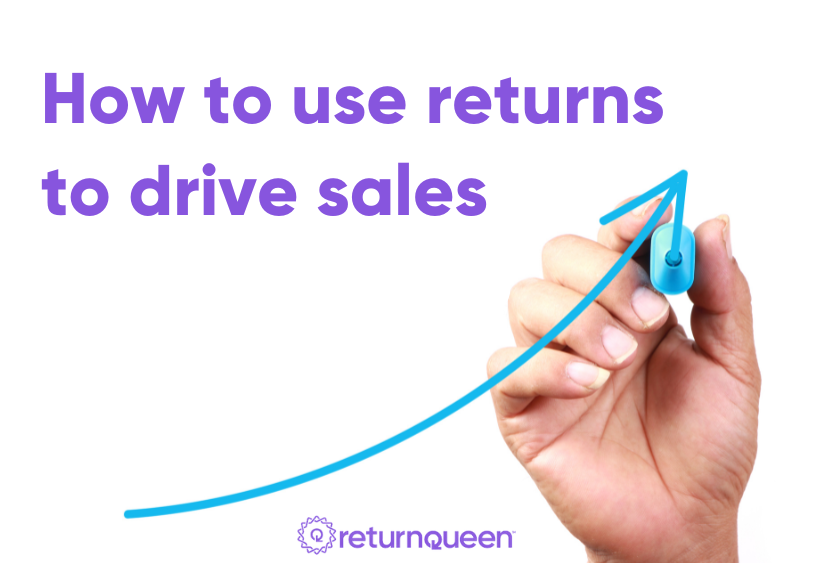Return policies as a marketing tool: How to use returns to drive sales

When you think of return policies, you probably imagine them as a necessary evil—a way to handle customer dissatisfaction while cutting your losses. But what if we told you that your store’s return policy could be one of your most powerful marketing tools?
A generous or hassle-free return policy can not only enhance customer satisfaction but also drive sales and foster brand loyalty. On the other hand, an inflexible return policy can drive customers away. In fact, one survey by SendCloud and Nielsen showed that ‘problems related to return policy’ is the fourth most occurring reason for shopping cart abandonment!
With that in mind, let’s explore how to turn your return policy into a strategic asset that attracts customers, encourages purchases, and boosts your bottom line:
The modern shopper’s mindset
Today's consumers are savvy, informed, and cautious. With countless options available at the click of a button, they’re looking for more than just a good product—they want a seamless shopping experience, and that includes easy returns.
In fact, studies show that a generous return policy can significantly influence a customer’s decision to buy, with 61% of customers checking the return policy before making a purchase.
Shoppers want the reassurance that if something doesn’t work out, they can return it cheaply and easily. And industry leaders like Amazon have set the bar high when it comes to customer expectations for easy and flexible returns.
Why return policies matter
A return policy isn’t just a set of rules for handling unwanted products—it’s a statement about your brand’s commitment to customer satisfaction. When done right, a return policy can:
- Build trust with your customers: A clear, fair, and customer-friendly return policy signals to shoppers that you stand behind your products and value their business.
- Reduce purchase anxiety: By offering easy returns, you lower the perceived risk of buying from your store, making customers more likely to take the plunge.
- Encourage repeat business: A positive return experience can turn a potentially negative situation into an opportunity to build long-term customer loyalty.
5 steps to crafting a customer-centric return policy
To use your return policy as a marketing tool, it needs to be designed with your customers in mind. Here’s how to create a policy that not only protects your business but also delights your customers:
- Make your returns policy simple and clear: Ambiguous or complicated return policies can frustrate customers and drive them away. Use straightforward language and clearly outline the steps involved in returning an item. Include information on time frames, condition requirements, and refund methods. Avoid legal jargon and keep it as concise as possible.
- Offer a generous return window: While it might seem a little counterintuitive, offering a longer return window can actually reduce the number of returns. When customers feel less pressure to make a quick decision, they’re more likely to keep their purchases. A 30- or 60-day return window is often seen as generous and customer-friendly.
- Offer free returns: Offering free returns is a powerful way to attract customers. It shows that you’re willing to go the extra mile to ensure their satisfaction. While it might involve some cost, the increase in sales and customer loyalty can more than offset this expense. Consider offering free returns as a promotional tool during peak shopping seasons or for high-value customers.
- Take the hassle out of the process: Simplify the return process as much as possible. This means providing prepaid return labels, offering multiple return options (such as in-store returns for online purchases), and ensuring that refunds are processed quickly. Better yet, you can go above and beyond by offering your customers super convenient doorstep pickups when you partner with a returns service like ReturnQueen. The easier the process, the more likely customers are to feel confident in their purchase decisions.
- Highlight your return policy in your marketing: Don’t hide your return policy in the fine print. Make it a selling point! Highlight it on your product pages, during checkout, and in your marketing materials. Phrases like “Hassle-free returns” can be powerful selling tools.
Leveraging your return policy to drive sales
Once you have a customer-centric return policy in place, it’s time to use it as a tool to drive sales. Here’s how:
- Promote your return policy in marketing campaigns: Use your return policy as a key selling point in your advertising. Whether it’s a social media ad, an email campaign, or a banner on your website, emphasize the ease and generosity of your return policy. For example, you might run a campaign that says, “Shop with confidence - free returns on all orders!”
- Encourage try-before-you-buy purchases: A generous return policy can encourage customers to make more spontaneous or experimental purchases. For example, they might be more willing to try a new product or brand if they know they can return it easily if it doesn’t work out. This can lead to increased average order values and higher sales.
- Turn returns into exchanges: Instead of focusing solely on refunds, use returns as an opportunity to offer exchanges. This not only helps retain revenue but also enhances the customer experience by ensuring they get exactly what they want. Consider offering incentives for exchanges, such as free shipping or a small discount on the replacement item.
- Personalize follow-ups after returns: When a customer makes a return, it’s an opportunity to engage with them further. Send a personalized follow-up email thanking them for their purchase and offering assistance with finding a better product match. You could also include a discount code for their next purchase, encouraging them to shop with you again.
- Use returns data to improve product offerings: Analyzing the reasons behind returns can provide valuable insights into product quality, fit, and customer preferences. Use this data to refine your product offerings, improve descriptions, and enhance the overall shopping experience. By addressing the root causes of returns, you can reduce return rates and increase customer satisfaction.
Ready to use returns as a marketing tool?
A well-designed return policy isn’t just about minimizing losses—it’s a powerful marketing tool that can drive sales, enhance customer loyalty, and differentiate your brand from the competition. By crafting a customer-centric return policy and leveraging it in your marketing efforts, you can turn returns from a potential headache into a strategic advantage.
Think of your return policy as a promise to your customers—a promise that you stand behind your products and are committed to their satisfaction. When customers know they can shop with confidence, they’re more likely to make a purchase, return for more, and spread the word about your brand.
To learn more about how you can transform your customers’ returns experience for the better, reach out to us at ReturnQueen. Let's make your customers fall in love with the shopping and returns experience you can offer them. After all, it’s not just good customer service - it’s smart marketing!

